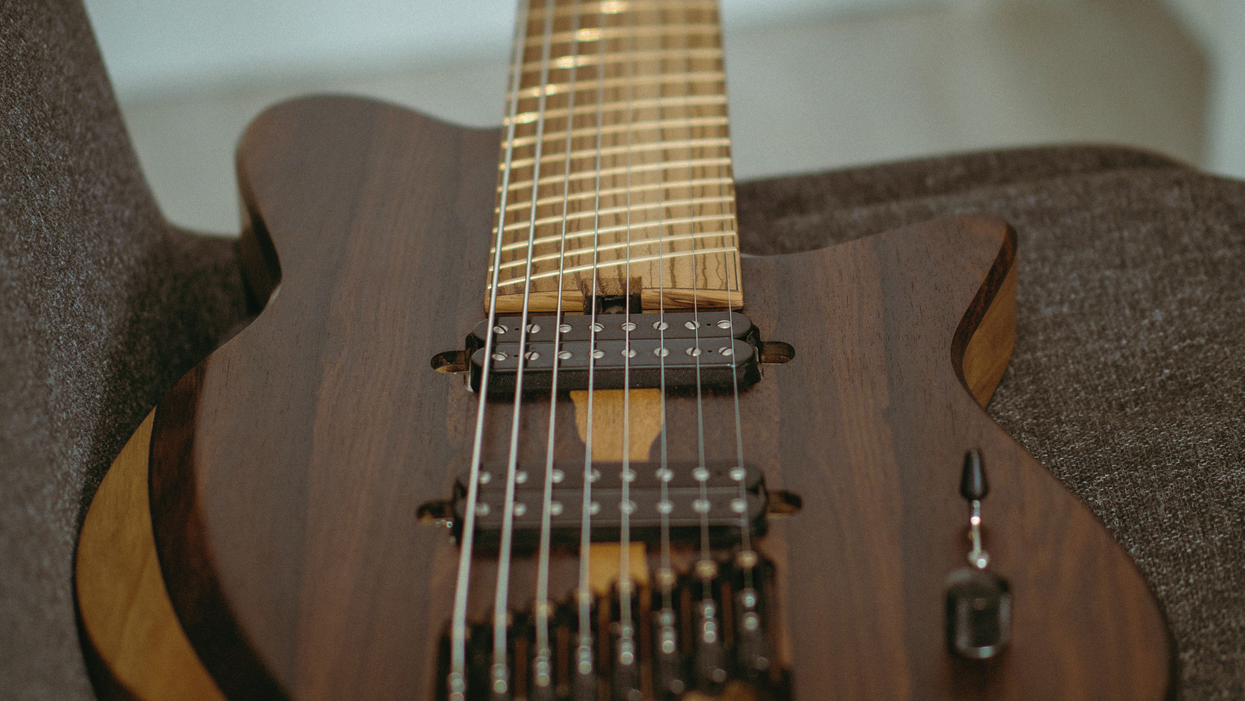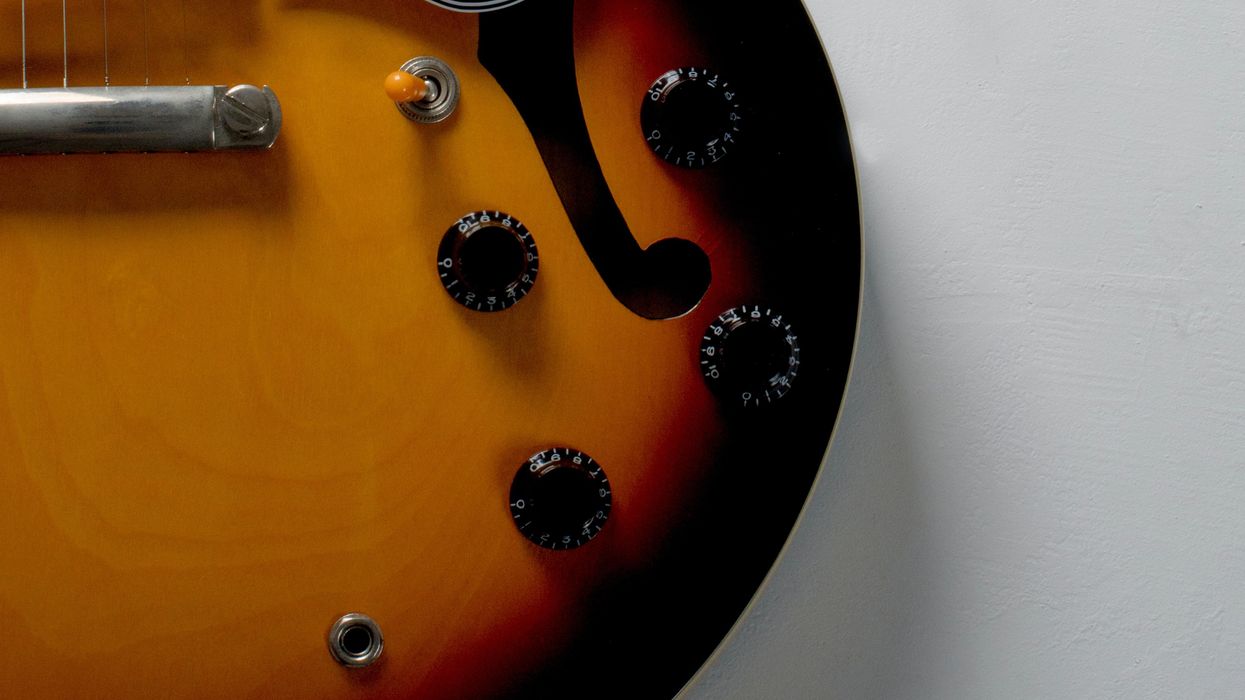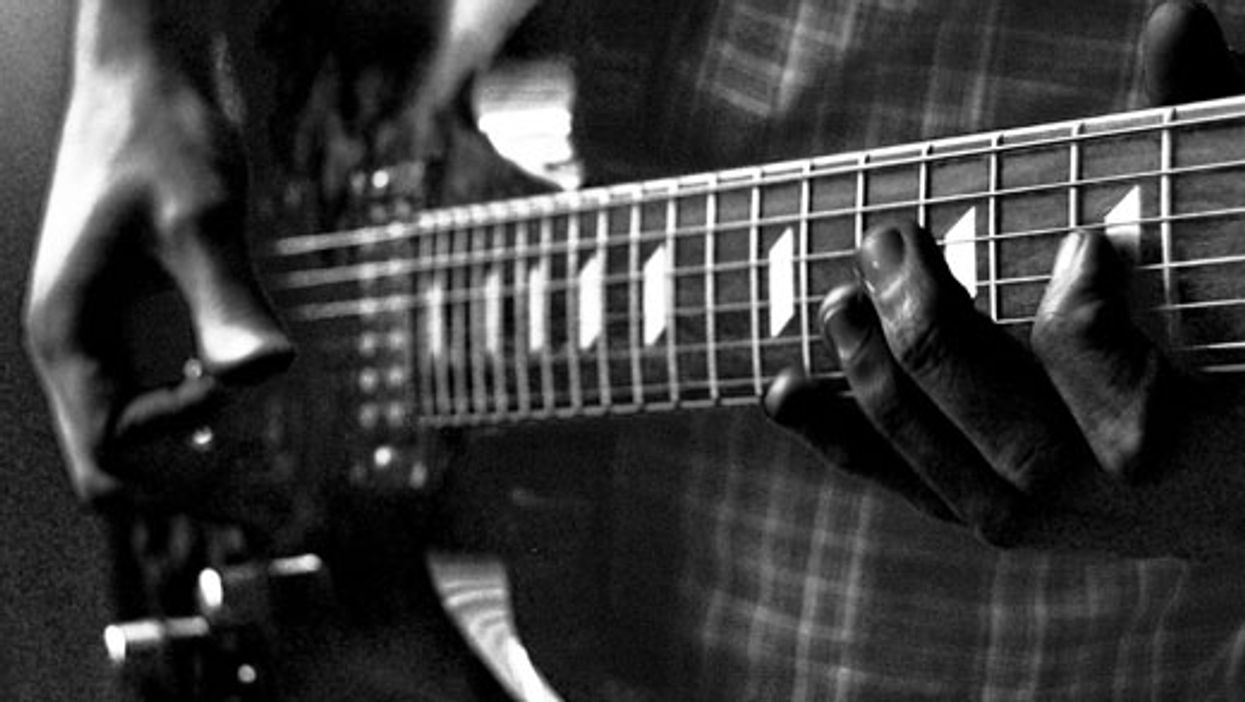Flanked by some of metal’s finest guitarists, Megadeth’s leader more than holds his own.
Upon being unceremoniously fired from Metallica in 1983, right on the cusp of their climb to worldwide success, Dave Mustaine channeled his righteous indignation into the formation of his own band, Megadeth, which he hoped would “destroy” his former band and new archenemy. While that may not have come to pass, his own band would rise to the heights of metal stardom, later joining Metallica as one of the “big four” metal bands, along with Slayer and Anthrax. The two bands may have mended fences, but over the course of his 40-plus years fronting Megadeth, Mustaine’s trademark vocal snarl and menacing guitar riffery have not abated, even as he was battling personal challenges like addiction and throat cancer, not to mention arm and neck injuries that looked to threaten his ability to play guitar. Over the years, top-tier metal guitarists have occupied the band’s second guitar chair, such as Marty Friedman, Kiko Loureiro, and its current occupant, Teemu Mäntysaari, all to much well-deserved acclaim. But today, we’ll be taking an arguably overdue, in-depth look at what makes Mustaine a great player in his own right.
Spider Chords
Mustaine considers himself to be a more proficient rhythm player than lead, so that’s where we’ll begin. (We’ll be looking at some of his excellent lead work a bit later.) As a songwriter, he found himself encountering, on multiple occasions, a specific chord change which proved to be technically challenging: a 5th-string-root power chord (root and fifth) immediately followed by a 6th-string-root power chord one fret higher, E5 to C5, for example. Fretting both chords with first and third fingers would prove to be awkward at the blazing-fast tempos at which he would often write. So, in order to create more fluidity and economy of movement, Mustaine’s eureka moment was to fret the 6th-string-root chord with his second and fourth fingers.
Ex. 1 is an exercise to help you get acquainted with this unorthodox technique. Begin by concentrating on the first measure. Repeat it at a slow tempo to get the movement under your fingers. When ready, add the remaining two measures, which will up the challenge, taking you down the neck twice as fast.
Here’s Mustaine himself demonstrating his signature move.
One song in which he employs this technique is “Wake Up Dead,” from Megadeth’s 1986 classic Peace Sells... but Who’s Buying? Ex.2 is based on one of the song’s riffs, and shows a nifty way to move down the fretboard. Be sure to lift the palm mute when indicated, to end with an even more sinister flourish.
Chromatic Ups and Downs
In the above examples, you’ll find plenty of chromaticism, the inclusion of non-diatonic (out-of-key) notes or chords linking those that are diatonic, resulting in multiple half-step (one-fret) shifts. Mustaine employs this quite a bit, and Ex. 3 is inspired by “A Tout le Monde” from 1990’s Rust in Peace. Even though the example is the key of F# minor (F#–G#–A–B–C#–D–E), take note of the “in between” chords, Bb5, C5, and G5 in measures one and two, and D#5 in measure four. Adding chromaticism to chord progressions allows you to quickly step outside the key and back again, adding a bit of spice.
Time Is on Your Side
Another aspect of Mustaine’s songwriting that he excels at is playing complex rhythms (while simultaneously singing, no less). There are two main ways in which he accomplishes this. First, he often uses syncopation, where off-beats are emphasized.
Ex. 4 is inspired by “The Conjuring” from Peace Sells… In measure two, the accented chords are all on the off-beats, which energetically propels the riff forward. The chords are offset by bass notes punctuated with palm muting, a classic feature of metal rhythm playing Mustaine often relies upon.
Mustaine’s rhythm talents aren’t limited to chords alone. He also writes malevolent single-note riffs, made more treacherous by his use of another rhythmic device: odd time signatures. This section of 7/8 from “Architecture of Aggression” from 1992’s Countdown to Extinction is a great example.
Ex. 5 is inspired by this song, and is also in 7/8 time. It looks a bit odd, so let’s find an easy way to digest this quirky time signature. Another way of looking at 4/4 time is as if it’s 8/8, or eight eighth-notes to the bar. Consequently, 7/8 time is simply 4/4 minus one eighth-note. In the example, you can see how, if this was a bar of 4/4, that there would be an eighth-note missing. As you play the riff slowly, count up to seven as you play each eighth-note. The bar will feel cut off at first, but that’s its magic, and as you repeat it, you’ll begin to feel it groove.
Soloing With the Best of ’Em
Mustaine takes his fair share of Megadeth solos and often creates a searing intensity by introducing a motif, or theme, then repeating it while adding variations as he goes. His solo in this live version of “Burnt Ice” from 2007’s United Abominations is great example.
In the solo, he adds some bluesy playing in between the variations, but Ex. 6 cuts and pastes each one so they’re played consecutively. It’s a heck of a workout, and notice how the final variation has the phrase crossing over the bar line, with the accent markings indicating where each six-note phrase begins. The main takeaway here is how Mustaine often creates variations on a theme in order to keep his solos interesting. Try coming up with your own simple theme, then gradually add some variations, changing things up when you feel yourself getting bored.
“Five Magics” from Rust in Peace demonstrates how Mustaine often continues to think like a songwriter when composing his solos, leading them to be cohesive and memorable.
Ex. 7 is based on the hypnotic introduction to his solo. The key at this fast tempo is to keep your picking steady, while being sure to lift your fret-hand finger off of the string quickly enough to allow the subsequent open string to be sounded. For smoothness, use your second finger to fret each note.
Let’s go full circle for the final glimpse into Mustaine’s lead work, by exploring his use of chromaticism in soloing. While he does sometimes take a phrase and repeat it, moving up or down the neck one fret at a time, chromaticism here refers to the use of non-diatonic notes in general. Ex. 8 captures the phrase he plays to bust out of the gate for his solo in “Chosen Ones” from 1985’s Killing Is My Business... and Business Is Good! While the song is in B minor, Mustaine doesn’t simply draw from the B minor scale (B–C#–D–E–F#–G–A). To create more of a bold statement, he borrows notes from other modes. For example, the first five-note grouping features notes from the B Phrygian Dominant mode (B–C–D#–E–F#–G–A), namely B, C, D# and A. B Phrygian Dominant is the 5th mode of the E harmonic minor scale (E–F#–G–A–B–C–D#), but put more simply, it’s just E harmonic minor, played so B functions as the root or “home base.”
But let’s stop analyzing there, as Mustaine has said he doesn’t concern himself with exotic scales and modes, and generally considers his playing to be blues based. So, while he may not actually be thinking of the above scale choice, it demonstrates his openness to taking his solos to unexpected places by exploring different sounds. This is something you can keep in mind when creating your own solos to keep them unique and fresh. After all, music doesn’t have to make sense; it just has to sound good.












![Rig Rundown: Russian Circles’ Mike Sullivan [2025]](https://www.premierguitar.com/media-library/youtube.jpg?id=62303631&width=1245&height=700&quality=70&coordinates=0%2C0%2C0%2C0)





